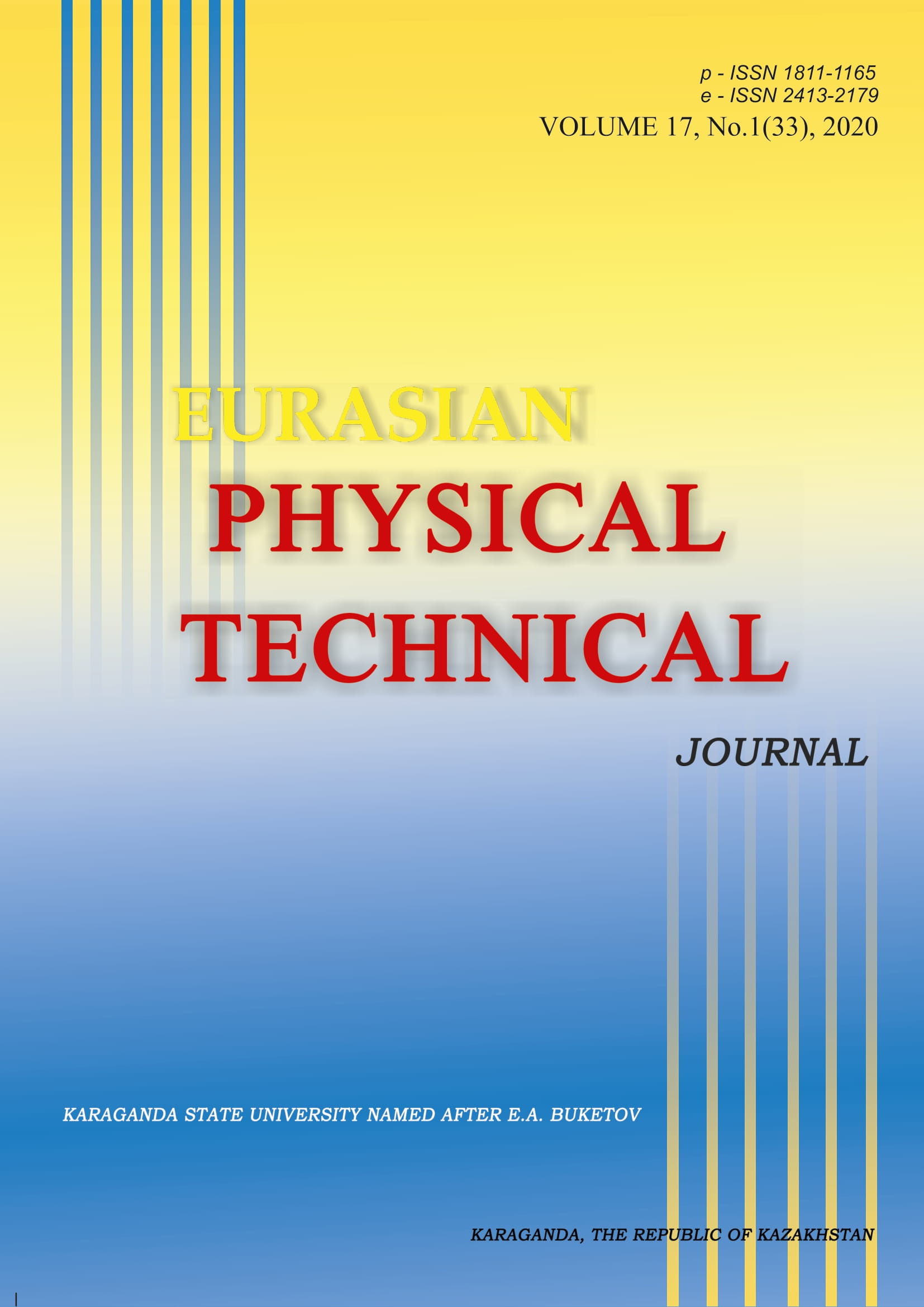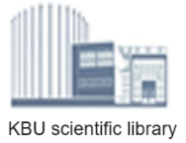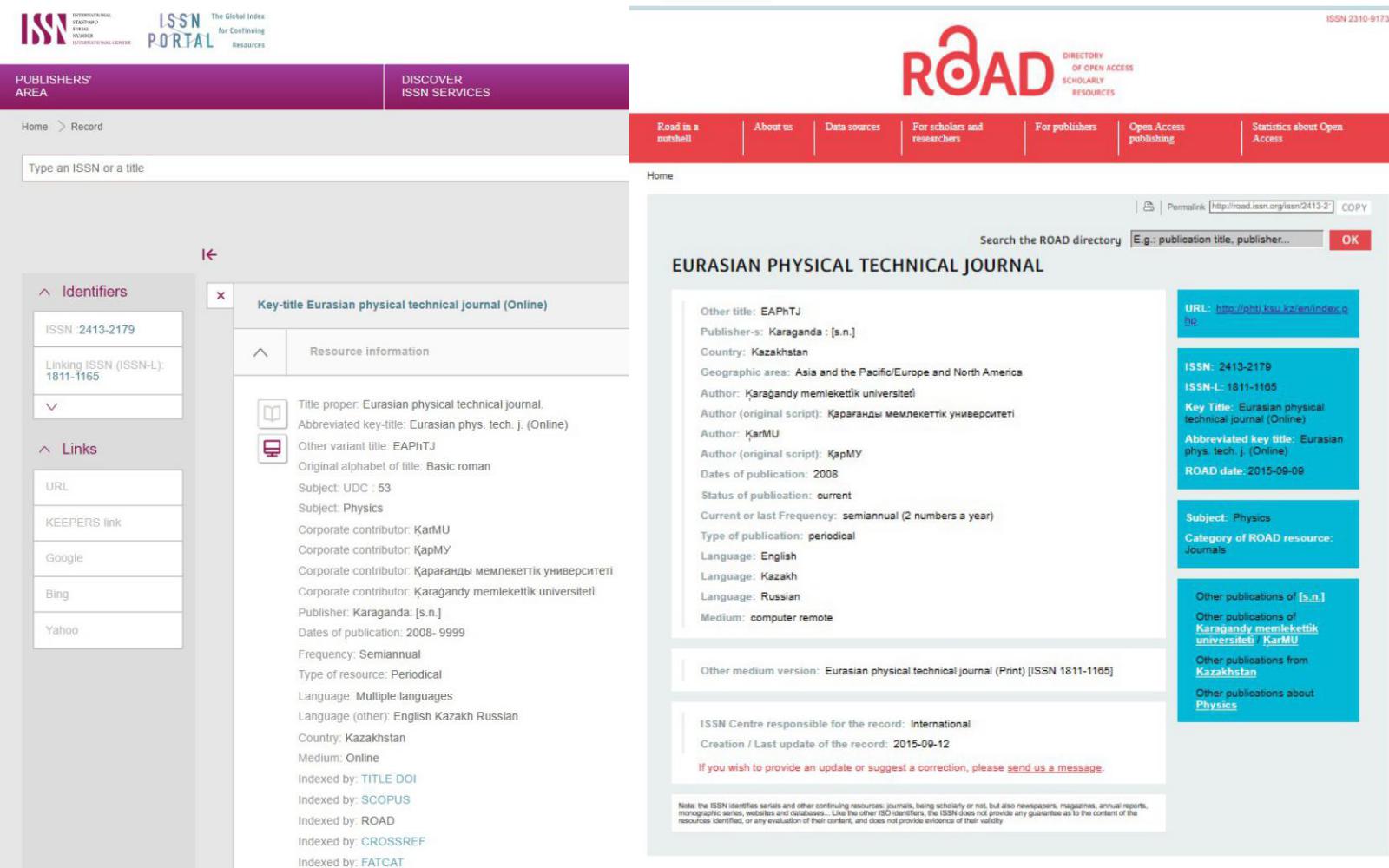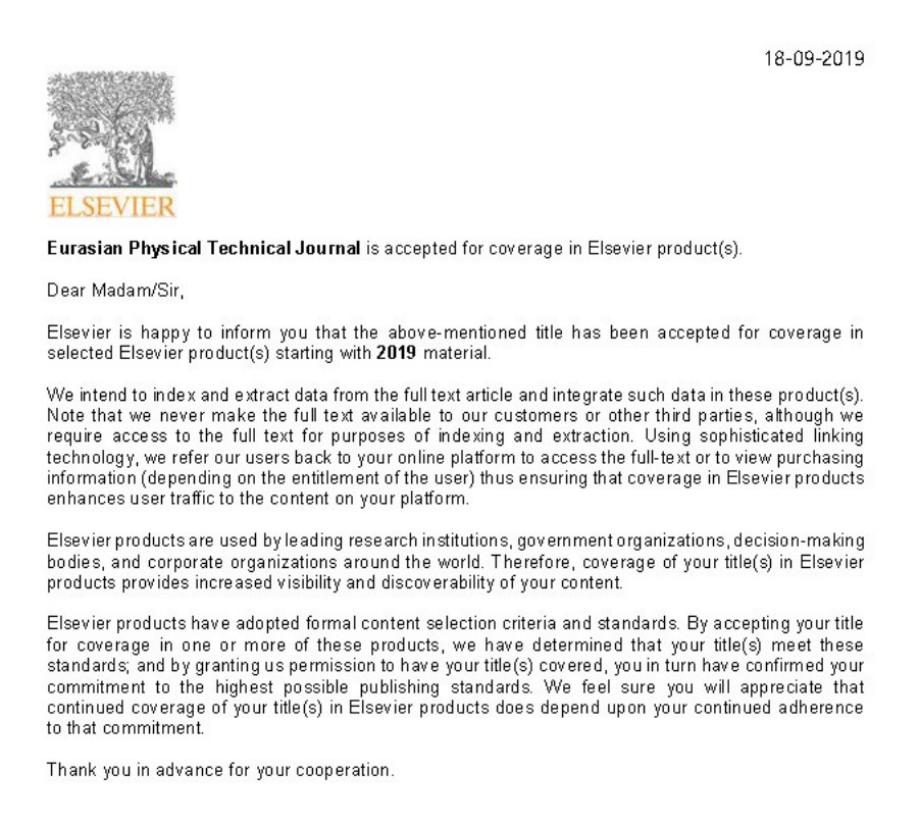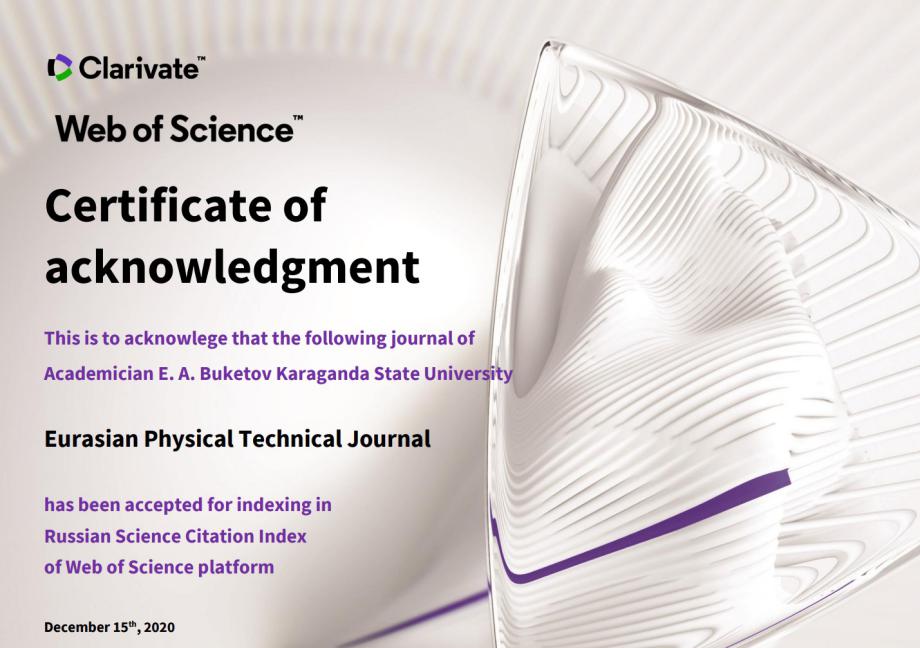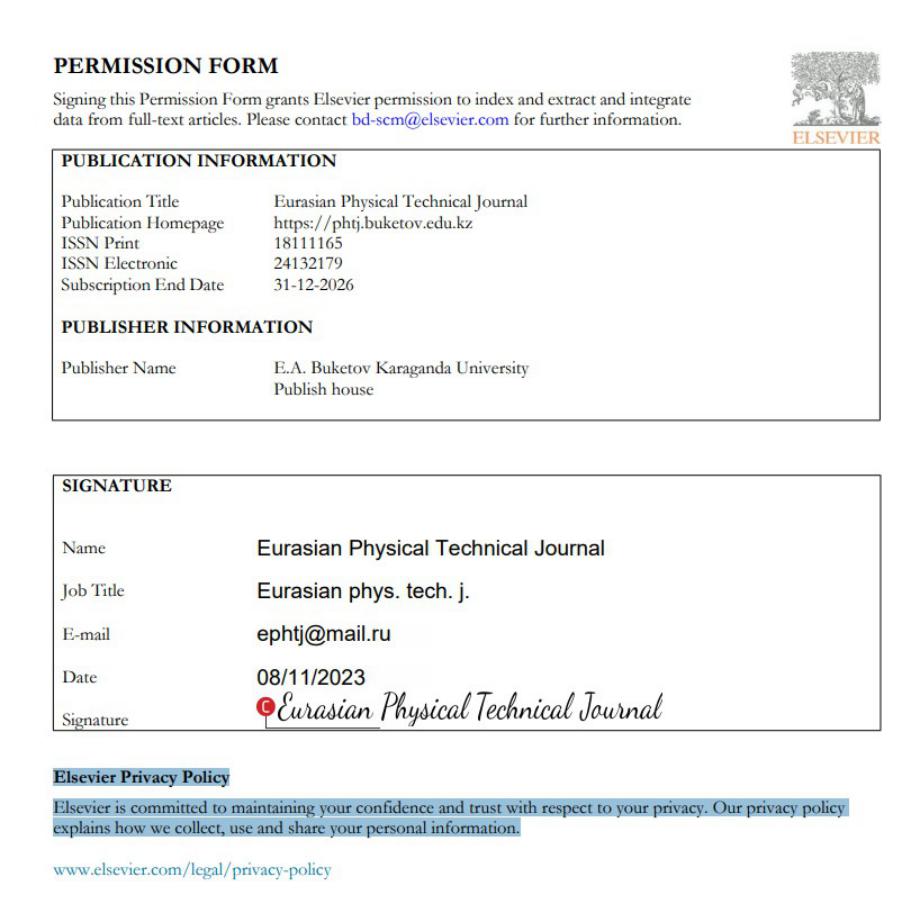ЖЕЛ ЭНЕРГЕТИКАСЫНЫҢ ЕСЕПТЕРІН ШЕШУ ҮШІН ЖЕЛ ЖЫЛДАМДЫҒЫНЫҢ ДИНАМИКАЛЫҚ МОДЕЛІ.
DOI:
https://doi.org/10.31489/2020No1/77-84Кілт сөздер:
жел энергиясы, жел моделі, спектрлік модель, пішінді сүзгілер.Аңдатпа
"Берілген жұмыс жел энергетикасының есептерін шешуге арналған жел жылдамдығының динамикалық моделін әзірлеуге арналған. Желдің уақытша моделі тұрақты және турбулентті болып табылатын екі құраушы түрінде ұсынылған. МЭК 61400-1: 2005 ұсынған Каймальдің спектрлік моделі жел жылдамдығының турбуленттік құраушысын сипаттау үшін пайдаланылды. Турбуленттіліктің параметрлерін есептеу үшін бастапқы деректер жел энергетикалық қондырғының класы болып табылады, ол өз кезекте орналасуымен, жел дөңгелегінің айналу өісінің биіктігімен және модельдеудің берілген уақыт аралығындағы орта жылдамдықпен анықталады. Жел моделін компьютерлік іске асыру шығу дабылдары қосылатын қалыптастырушы сүзгіштерге әсер ететін ақ шудың статистикалық тәуелсіз көздері негізінде жүзеге асырылады. Алынған нәтижелерді талдауы сүзгіштерді қалыптастыру әдісінің негізінде жүзеге асырылған жел ағынының моделі жел жылдамдығының бойлық құраушысын адекватты үлгілеуді қамтамасыз етеді және жел энергетикасының есептерін шешу үшін пайдаланылуы мүмкін. "
References
"1 Renewables 2018 Global Status Rep ort. Renewable Energy Policy Network for the 21st Century. 2018. – 325 р. Available at: http://www.ren21.net/ (accessed 20 October 2019).
Cherubini A., Papini A., Vertechy R., Fontana M. Airborne Wind Energy Systems: A review of the technologies. Renewable and Sustainable Energy Reviews, 2015, Vol. 51, pp. 1461–1476.
Goudarzi N., Zhu W.D. A review on the development of wind turbine generators across the world. International Journal of Dynamics and Control, 2013, Vol. 1, No. 2, pp.192–202.
Abdullah M.A., Yatim A.H., Tan C.W., et al. A review of maximum power point tracking algorithms for wind energy systems. Renewable and Sustainable Energy Reviews, 2012, Vol. 16, pp. 3220– 3227.
Guo R, DuJ., J. Wu, Y. Liu, The Pitch Control Algorithm of Wind Turbine Based on Fuzzy Control and PID Control. Energy and Power Engineering, 2013, Vol. 5, pp. 6-10.
Surzhikova O. Power supply of remote and almost inaccessible settlements. IOP Conference Series: Materials Science and Engineering IOP. 2015, Vol. 81, No 1 doi10.1088/1757-899X/81/1/012098
Bemš, J., Starý, O., Macaš, M., Žegklitz, J., Pošík, P. Innovative default prediction approach. Expert Systems with Applications, 2015, Vol. 42, No 17-18, pp. 6277-6285. doi: 10.1016/j.eswa.2015.04.053
Kerrouche K., Mezouar E., Boumediene A., et al. Modeling and Lyapunov-Designed based on Adaptive Gain Sliding Mode Control for Wind Turbines. Journal of Power Technologies, 2016, Vol. 96, No.2, pp.124–136.
Barbosa de Alencar D., De Mattos Affonso C., Limão de Oliveira R.C., et al. Different Models for Forecasting Wind Power Generation: Case Study. Energies, 2017, Vol. 10, No. 1976, pp. 1 – 27.
Sarsikeev Y, Lukutin B.V, Lyapunov D.Y., Surkov M.A., Obuhov S.G. Dynamic model of wind speed longitudinal component. Advanced Materials Research, 2014, Vol. 953-954, pp. 529-532.
Abo-Khalil A.G., Alyami S., Sayed K., Alhejji A. Dynamic Modeling of Wind Turbines Based on Estimated Wind Speed under Turbulent Conditions. Energies, 2019, Vol. 12, No. 1907, pp. 1–25.
Yunus K., Thiringer T., Chen P. ARIMA-Based Frequency-Decomposed Modeling of Wind Speed Time Series. IEEE Transactions on Power System, 2016, Vol. 31, pp. 2546–2556.
Smilden E., Sørensen A., Eliassen L. Wind Model for Simulation of Thrust Variations on a Wind Turbine. Energy Procedia, 2016, Vol. 94, pp. 306 – 318.
IEC 61400-1: 2005 Wind Turbines – Part 1: Design requirements. Available at: https://webstore.ansi.org /Standards/IEC/IEC61400AmdEd2010?msclkid
Kirpichnikova I.M., Matveyenko O.V. Computer simulation of wind pulsation depending on time. International Scientific Journal for Alternative Energy and Ecology, 2010, Vol. 4, No. 81, pp. 54–59.
Neammanee B., Sirisumrannukul S., Chatratana S. Development of a Wind Turbine Simulator for Wind Generator Testing. International Energy Journal, 2007, Vol. 8, pp. 21 – 28.
Gavrilin A., Moyzes B., Kuvshinov K., Vedyashkin M., Surzhikova О. Determination of optimal milling modes by means of shock-vibration load reduction on tool and peak-factor equipment. Materials Science Forum, 2019, Vol. 942, pp. 87 – 96. doi:10.4028/www.scientific.net/MSF.942.87
Hao H., Gu B., Yan R., Hui H. Simulation and Analysis of Direct-driven Wind Turbine. International Journal of Online and Biomedical Engineering, 2015, Vol. 11, No. 5, pp. 17 – 23.
Sakipova S.E., Tanasheva N.K. Modeling aerodynamics of the wind turbine with rotating cylinders. Eurasian Physical Technical Journal. 2019, Vol.16, No. 1(31), pp. 88 – 93. DOI: 10.31489/2019No1/88-93
Králík T., Bemš, J., Starý, O. Electricity markets integrations - What is the current status and future outlook of bidding zones reconfiguration? Proc. of the 9th Intern. Scient.Symposium on Electrical Power Engineering, ELEKTROENERGETIKA 2017, 237 – 240.
Erich Hau Wind Turbines: Fundamentals, Technologies, Application, Economics. 2-nd edition. Springer – Verlag Berlin Heidelberg. 2006, 783 p.
"

